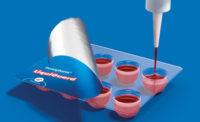Healthcare Compliance Packaging Council Column
The Role Packaging Plays in the Opioid Crisis

The Federal Drug Administration (FDA) is putting a full court press on the opioid crisis, and unit-dose packaging looks to be part of the team.
Recently I had the honor to speak at the FDA’s public workshop, “Packaging, Storage and Disposal Options to Enhance Opioid Safety - Exploring the Path Forward.” I was part of a diverse group of stakeholders, expert panel members from the medical and pharmacy fields, pharmaceutical manufacturing, packaging providers, payers and universities, all at the table with FDA representatives to focus on what role packaging—that’s right, packaging—might play in untangling the complex web of opioid abuse, misuse, including third party access, accidental exposure and excess supply. Scott Gottlieb, M.D., FDA Commissioner, urged the group to be aggressive in developing actions to stem the tragedy going forward, including developing packaging for shorter term use and placing bumps in the road to prevent overprescribing with measurements of success. Gottleib commented, “The crisis is so immense we must consider every option available to us.”
Over two focused days, the group discussed the design and integration of novel packaging and labeling, storage, and disposal options for existing health care and pharmacy systems. The group considered barriers to and ease of implementation of package solutions and incentives for their design. The group sought post-market research data to see if there are existing indicators to support the hypothesis that packaging solutions could aid the group’s goals. In addition, they brainstormed potential future research that would allow us to evaluate how packaging solutions could be engaged to protect children and adults from unintentional misuse while not hindering the ability of the intended patients to access product to manage acute and chronic pain.
The HCPC maintains that serialized compliance-prompting unit dose packaging can help the patient, protect the drug and secure the product in the supply chain, regardless of the type of drug. This type of pharmaceutical packaging can help curtail some forms of opioid abuse and misuse with the following advantages:
Pre-filled, serialized unit-dose packaging does not require repackaging at the pharmacy.
Prefilled, serialized unit-dose packaging would allow better tracking of doses dispensed which would give better visibility to abusive prescribing and dispensing practices.
Unit-dose packaging can complement and support the CDC’s recommended 3-, 5- and 7-day prescriptions for new patient, short-term use.
Unit-dose packaging would allow visible tracking of doses taken by the patient on the package, providing either visual or potentially electronic reminders to avoid overdosing.
This package form can provide visual evidence of remaining doses and hinder third party pilferage.
Prefilled unit-dose packaging can reduce filling errors or introduction of counterfeit drugs.
While compliance prompting unit-dose blister is not a silver bullet, and it isn’t a one-size-fits-all packaging solution, based on our current knowledge base, and understanding of what can be implemented fairly rapidly, perhaps packaging can save a few lives from the devastation of opioid addiction.
Learn more information on HCPC, please visit hcpconline.org.
Looking for a reprint of this article?
From high-res PDFs to custom plaques, order your copy today!






